
The Trnava Synagogue, one place out of 4 locations, where posters from Asia were shown
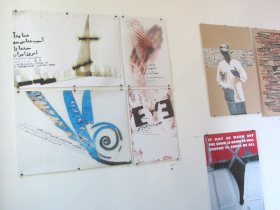
Iranian posters (Saed Meshki left, Reza Abedini right, Joubeen Mireskandari bottom)
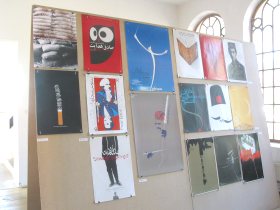
Iranian posters
Anyone following the international poster scene must have noticed that two countries have appeared in international competitions that were almost completely absent only a few years ago: China and Iran. The recent exhibition of posters from the Triennial in Trnava, Slovakia, is just an example for a trend that can be observed from Kharkov to Lahti, from Toyama to Mexico.
The catalogue of the 1997 Trnava Poster Triennial lists only one participant from China, Chen Fang, and none from Iran, while in 2003 there were 15 participants from Iran, and 40 from China, not even counting chinese designers living abroad nor those from Taiwan.
Why these two particular countries, and why the sudden explosion of activity? First, it should be noted that both countries have a long visual arts tradition and also did not have to start from scratch in poster design. Yu Bingnan, the great old Beijing graphic design teacher, was a successful student in Leipzig (DE) in the 1960s, and the posters of Morteza Momayez from Tehran appeared at the Biennials of Warsaw and Brno in 1974 already. Since 1986, there are regular graphic design biennales in Tehran, with thousands of entries.
Maybe the global internet has helped to lift the curtain, and certainly the strong desire of the young generation to take part in the international game, to measure themselves against the top artists of the world, and maybe a growing self confidence and justified pride when they realized that they would measure up.
Both countries contribute with their own alphabets to a poster world dominated by roman characters. In particular the iranian professionals seem to enjoy the liberties offered by the free flowing farsi typography, as opposed to the grid bound structure of both roman and chinese. Interestingly, the students of both countries seem to have more trust in roman script and english language to convince international juries of their qualities.
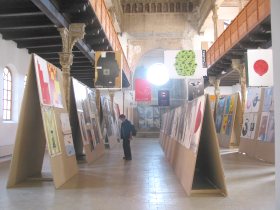
Inside the Synagogue, with japanese posters on the ground floor
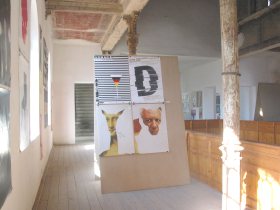
Chinese posters on the balcony
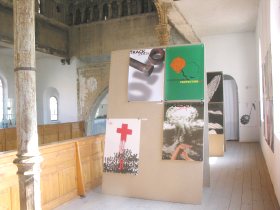
Chinese posters